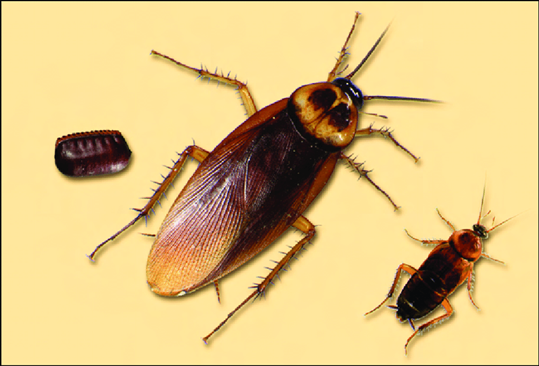Introduction to Phylum Arthropoda:
- The largest and most prosperous phylum in the animal kingdom is Arthropoda.
- Arthron, which means joint, and podos, which means foot, are Greek words that translate to “animals with jointed legs.”
- They inhabit freshwater, marine, terrestrial, and aerial environments and are cosmopolitan.
General features of Arthropods include:
Symmetry
They have bilaterally symmetrical body.
Segmentation
They have metamerically segmented body with external segmentation only called tagmata. The segmentation begins in embryonic stage and continues up to adult. One segment is dependent on another.
Level of body organization
They have organ system level of body organization
Germ layer
They have all three germ layers i.e outer ectoderm, middle mesoderm and inner endoderm (Triploblastic)
Body plan
They have complete body plan i.e tube within tube body plan. They possess both mouth and anus. Blastopore first forms mouth and then anus is formed.
Coelom
They have true coelom (Schizocoelom) that is formed by mesodermal splitting. Sexes are separate (though hermaphroditism also occurs). Reproduction: Sexually and asexually (some parthenogenesis) (e.g. Honey bee). Sexual dimorphism is common.
Exoskeleton does not grow, thus shedding occurs periodically via moulting (hormonally controlled).
Nervous system
Double ventral nerve cord, ganglia per segment.
Circulatory
Open circulatory system, dorsal vessel present.

Fig: Periplaneta americana
Basis of Classification of Arthropods:
- Antennae and antennules (present/absent, structure).
- Presence/absence of caudal styles.
- Arrangement of appendages (head, thorax, abdomen).
- Presence of mandibles.
- Type of excretory and respiratory organs.
Subphyla and Classes of Arthropoda:
Phylum Arthropoda
Subphylum Trilobita
Includes extinct trilobites. Ancient marine arthropods, extinct since Permian
Subphylum Chelicerata
- Class Merostomata
- Class Arachnida
Subphylum Mandibulata
- Class Crustacea
- Class Insecta
- Class Myriapoda
Number of appendages:
Body divisible into:
- Subphylum Onycophora: Head (Cephalon) and trunk
- Subphylum Trilobitomorpha: Head (Cephalon), thorax and pygidium
- Subphylum Chelicerata: Cephalothorax and abdomen
- Subphylum Mandibulata
- Crustacea: Cephalothorax and abdomen
Body Division of Class Insecta:
Insecta: Head, thorax and abdomen
Myriapoda:
Order: Chilopoda: Head (Cephalon) and trunk
Order: Diplopoda: Head, thorax and abdomen
| Class | Respiration | Digestive gland | Excretion |
| Merostoma | Book gills | Hepatopancreas | Coxal gland |
| Arachnida | Book lungs | Hepatopancreas | Coxal gland |
| Crustacea | Gills | Hepatopancreas | Green gland or antennary gland |
| Insecta | Tracheal tube | Hepatic caeca | Malpighian tubule |
| Myriapoda | Tracheal tube | Hepatic caeca | Malpighian tubule |
Body division of class Insecta:
Head
A pair of simple eyes, a pair of compound eye, antenna and mouth parts
- Simple eyes are used for photoreception (detecting intensity of light).
- Each compound eye contains about 2000 visual units called ommatidia. Each ommatidia forms one image, thus imparting mosaic vision.
- Antenna helps in thigmoreception (touch), olfactoreception (smell) and thermoreception (temperature).
- Mouth parts of insects are modified for various purposes
- Biting, cutting and chewing: Cockroach, grasshopper
- Piercing and sucking: Mosquito, sandfly and bedbug
- Chewing and lapping: Honey bee and wasp
- Sponging: Housefly
- Siphoning: Butterfly and moth
Thorax
Legs and wings
Thorax is divided into prothorax, mesothorax and metathorax which bear legs and wings.
Abdomen
- Anal cerci and anal style.
- Anal cerci help in photoreception (sound).
- Anal style helps in chemoreception, copulation and sperm transfer.
Medical Importance of Insects:
Hemiptera (True Bugs)
Among the true bugs, an important species is Triatoma, commonly referred to as the “kissing bug” because of its tendency to bite humans around the face while they sleep. This insect plays a major role in the transmission of Trypanosoma cruzi, the protozoan parasite responsible for Chagas disease, also known as American sleeping sickness. The disease is particularly significant in Central and South America, where the kissing bug serves as its primary vector.
Phthiraptera (Lice)
Lice are small, wingless ectoparasites that live on the human body. Two notable species include:
- Pediculus humanus capitis – the head louse, which is commonly seen in school-aged children and spreads primarily through close personal contact.
- Pediculus humanus humanus – the body louse, which lives in clothing and moves to the skin to feed. This species has greater medical importance, as it can transmit diseases such as epidemic typhus, trench fever, and relapsing fever.
Siphonaptera (Fleas)
Fleas are laterally compressed, wingless insects that act as vectors of several diseases. The most medically important species is Xenopsylla cheopis, the rat flea, notorious for transmitting:
- Bubonic plague – caused by Yersinia pestis, historically responsible for devastating pandemics.
- Murine typhus – caused by Rickettsia typhi.
Their ability to transmit these infections makes them important in both human and veterinary health.
Diptera (Flies and Mosquitoes)
This diverse order includes several insects of medical significance:
- Houseflies and blowflies are well-known mechanical vectors. By contaminating food and water with pathogens from garbage, feces, or decaying matter, they spread diseases such as typhoid fever, cholera, and dysentery.
- Certain species of flies are associated with myiasis, a condition in which their larvae invade and feed on living or necrotic tissue in humans and animals.
- Interestingly, while maggots can cause disease, they also have a therapeutic use. In controlled medical settings, sterile maggots are employed in maggot therapy to clean chronic or infected wounds. They selectively consume dead tissue and secrete substances that promote healing, making them a valuable tool in modern medicine.
